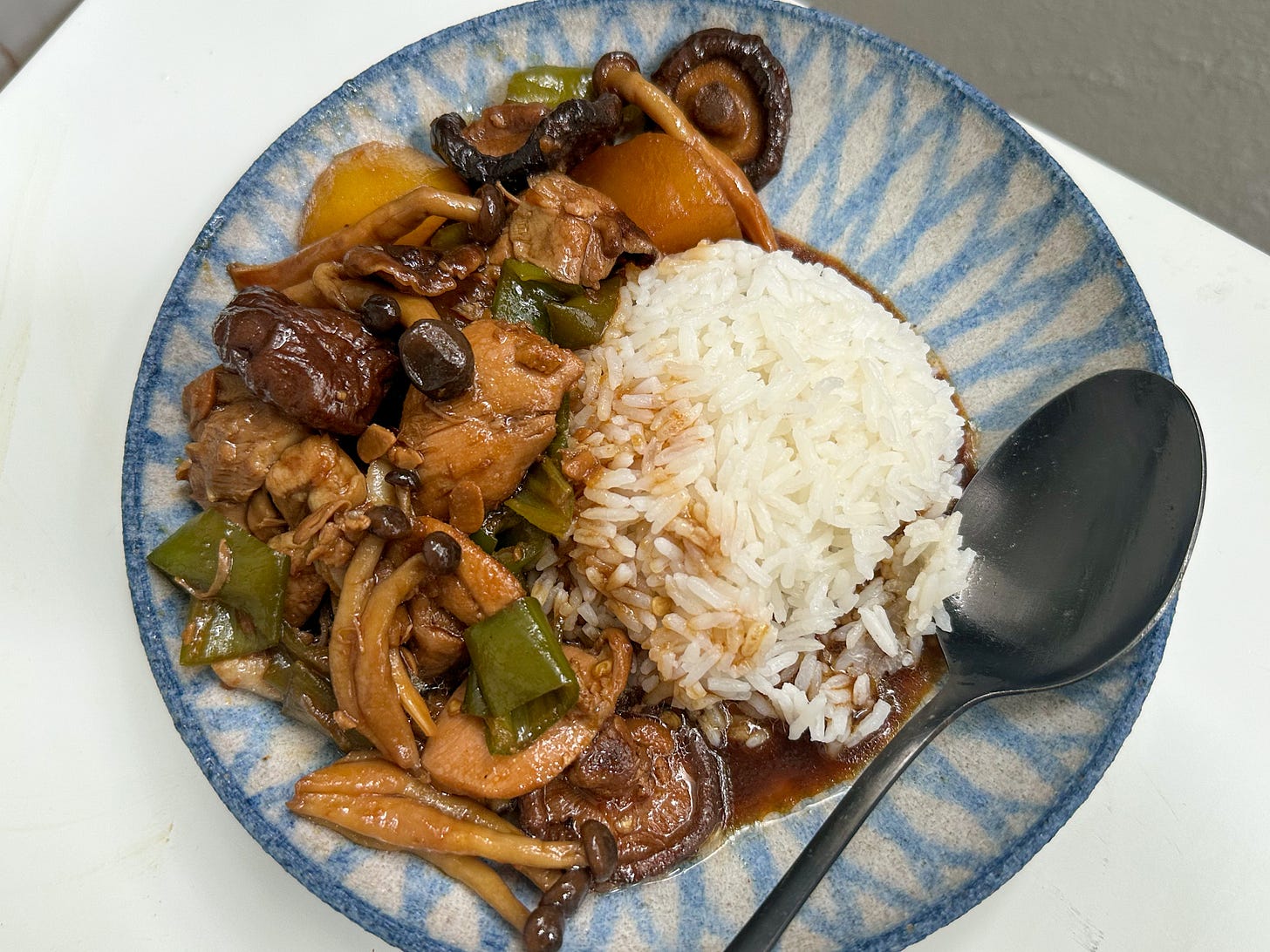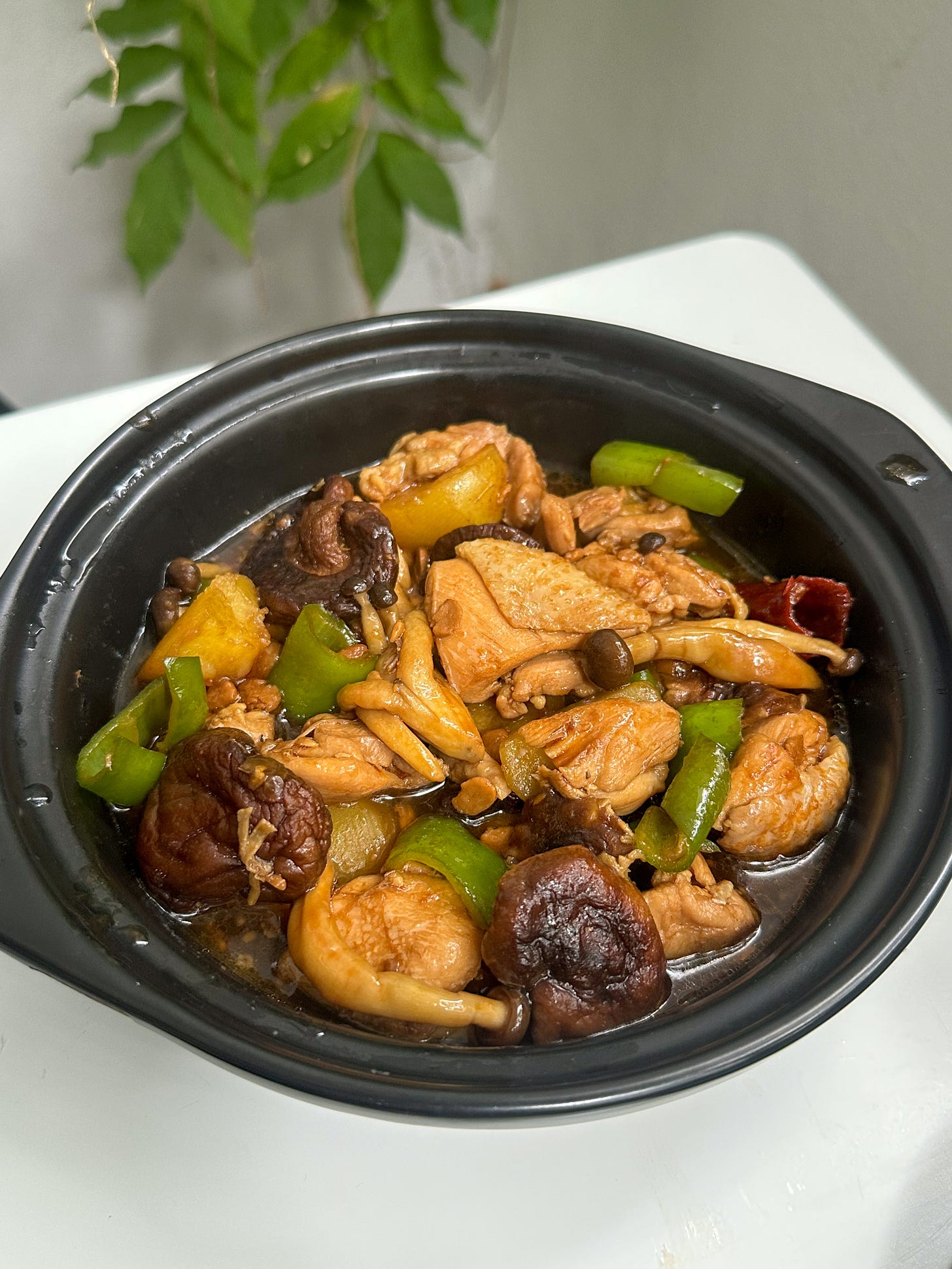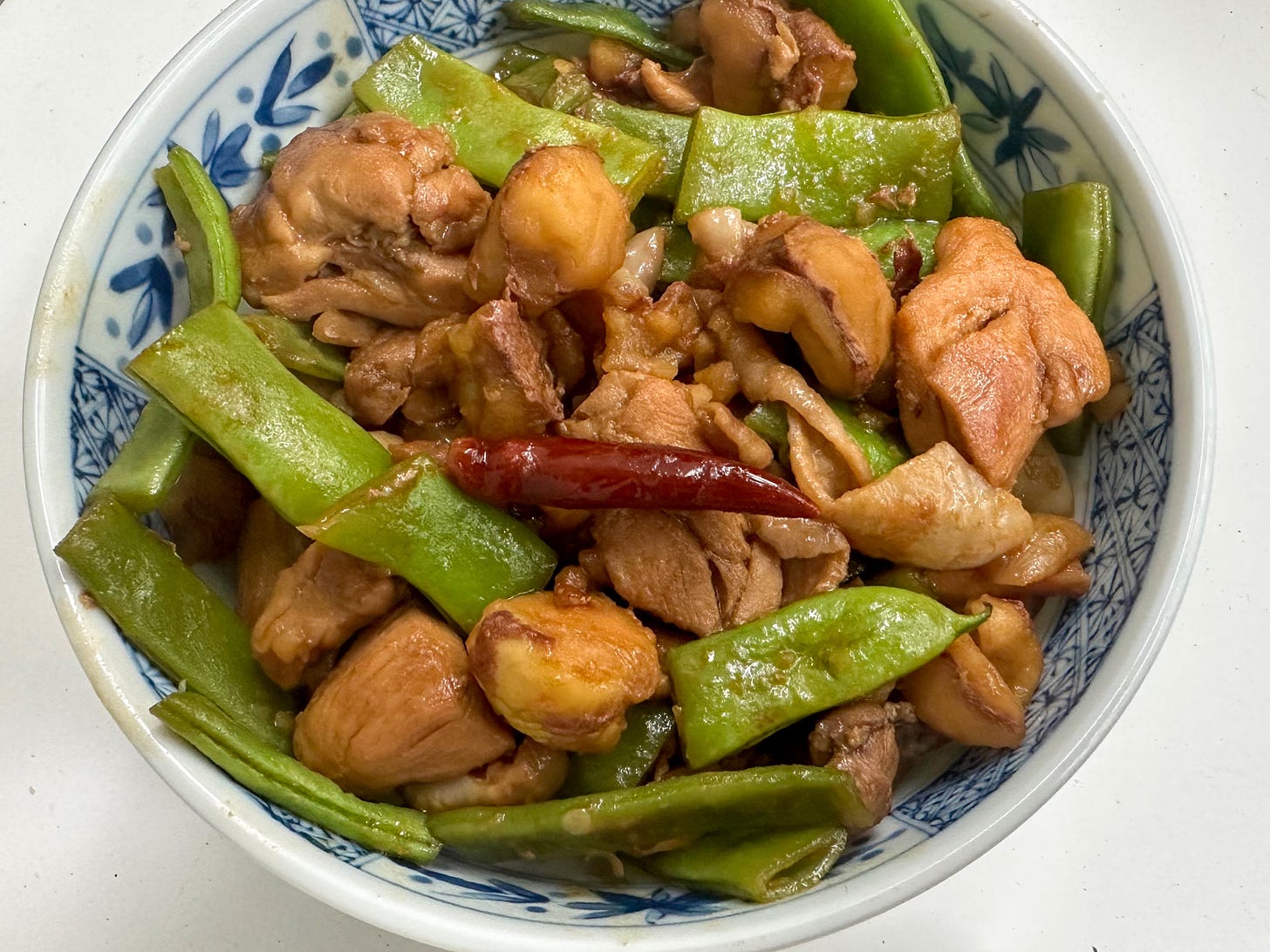Hello! Berlin's recent drastic drop in temperature left me yearning for soul-warming dishes like stews and soups. One, in particular, is the braised chicken dish, Huang Men Ji (黄焖鸡), with shiitake mushrooms. While not a typical Sichuan dish, it gained immense popularity across China in the early 2010s.
Watch me make it on Instagram or TikTok!
What is huang men ji?
Huang Men Ji (黄焖鸡) is a soy-braised chicken dish served in a piping hot clay pot, often accompanied by rice. The sauce boasts rich umami flavors from shiitake mushrooms, soy sauce, oyster sauce, and soy paste. It’s often sold in single portions in chain restaurants. I first made it during the thick of the pandemic, and it instantly transported me back to 2014 when I lived in a small shared flat in Beijing during an internship. Juggling internship and preparing for my English and German tests, I was perpetually stressed and looking for cheap, quick meals on the street. Huang men ji was one of them.
This dish, with its origins in Shangdong, saw a remarkable transformation into a commercial phenomenon during the 2010s, at its peak even surpassing McDonald's in numbers. It’s not something I grew up with but it evokes a certain emotion of being fresh and anxious in a new place. Our taste memory is predominantly shaped by local cuisine but substantially influenced by the waves of food trends. For a millennial Chinese kid, they’re American fast food, Taiwanese bubble tea and fried chicken, Japanese oden, and Korean BBQ, to name a few.
The tradition of soy-braised chicken
However, huang men ji is not something unfamiliar. The history of soy-braised chicken with vegetables in China dates back centuries. A recipe of braised chicken with chesnuts appears as early as 1792 in the book Recipes from the Garden of Contentment (suiyuan shidan, 随园食单).
“鸡斩块,用菜油二两炮,加酒一饭碗,秋油一小杯,水一饭碗,煨七分熟;先将栗子煮熟,同笋下之,再煨三分起锅,下糖一撮”
translation: Chop the chicken roughly, fry in vegetable oil. Add cooking wine, soy sauce, water, and cook. Add cooked chestnuts and bamboo shoots, let simmer for some time and season with sugar."
This is the fundamental method for preparing braised chicken in Chinese cuisine, with room for numerous variations. It involves three steps: searing the chicken, adding seasonings and liquid, and then simmering. Some might choose to enhance it with doubanjiang or more chili sauce. You can also throw in carrots and sweet potatoes. In Sichuan, there's a popular version featuring taro and a hot-pot base sauce, called yu er ji (芋儿鸡). My friend RJ brought some foraged chestnuts all the way from southern Germany, prompting me to create a version using them as well.
The recipe
Servings: 2-3
350g boneless chicken thigh
4 slices of ginger
2 dried chilis, chopped
4 dried shiitake mushrooms
100g mixed fresh mushrooms (shiitake and shimeji)
1 green chili pepper
150g potatoes
1 tbsp Shaoxing wine
2 tsp sugar
1 tbsp Chinese soybean paste (huang dou jiang)
1 tbsp light soy sauce
1 tbsp dark soy sauce
1 tbsp oyster sauce
vegetable oil
Cooked white rice
Instructions
Begin by cleaning and soaking the dried shiitake mushrooms in warm water until they rehydrate, reserving the soaking liquid. Deseed the chili pepper and slice it. Clean the fresh mushrooms.
Cut the chicken into large chunks. Combine the Chinese soybean paste, light and dark soy sauces, oyster sauce, and sugar until smooth.
Heat some oil over medium heat, add the chicken pieces, and fry until they are no longer pink. Add the Shaoxing wine and let it cook until the liquid evaporates. Add ginger and dried chilis and fry until they become fragrant. Add the sauce and stir-fry to combine.
Deglaze the pan with about 200-300ml of the reserved mushroom soaking liquid, ensuring it covers the chicken. Let it simmer, covered, for 10 minutes. Then add the potatoes and shiitake mushrooms, and continue to simmer, covered, for 15 minutes or until the potatoes are cooked. Finally, add the fresh mushrooms and green pepper, cooking for 3-5 minutes. Serve with steamed white rice.
Notes
Chinese soybean paste (huang dou jiang, 黄豆酱) is available in bigger Asian grocery stores (to buy in Germany and US), you can substitute it with a thick soy-based sauce like hoisin sauce or Korean doenjang, or skip it.
Chicken breast or bone-in chicken thigh (around 500g) can be used for this recipe.
Using the soaking water from the dried shiitake mushrooms is a secret tip as it infuses the dish with a deep umami flavor. Fresh mushrooms are added for their tender texture.






